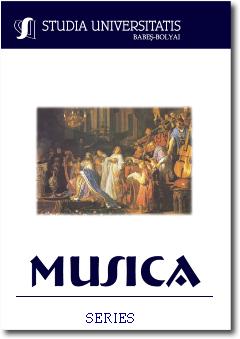IN THE SHADOW OF MANFRED: BYRON, SCHUMANN AND TCHAIKOVSKY
IN THE SHADOW OF MANFRED: BYRON, SCHUMANN AND TCHAIKOVSKY
Author(s): Ecaterina BanciuSubject(s): Music
Published by: Studia Universitatis Babes-Bolyai
Keywords: Byron; Manfred; Schumann; Tchaikovsky; programmatism; overture-symphony; programmatic symphony.
Summary/Abstract: The romantic hero is born from reality. Whether his name is Manfred, Werther, Clavigo, Onegin or Byron, Schumann, Tchaikovsky, he will always bear the seal of the society he comes from. Noble and cultivated, he enjoys his privileged life to the fullest, but at some point this no longer satisfies him. An outlaw, a “wasted” and incomprehensible genius, this “enfant terrible” suffering from the incurable “mal de siècle” escapes, disillusioned, from his commonplace existence and embarks on a quest for the unknown, living in that Eminescian “poignant charm”. He faces fate with dignity, without repent, paying for his audacity with his life. George Gordon Byron, Shakespeare's illustrious descendant, fascinated the whole European cultural space: he created the prototype of the Romantic hero not only through his poems, but also through his own adventurous life. Manfred (1816-1817) is a dramatic poem sprinkled with supernatural elements, haunted by ghosts, written in the tone of the black novel and of the mysterious romantic drama. The poet took the name of his character from Manfred, King of Sicily in the 13th century, invoked in Dante's Divine Comedy. Nietzsche was so impressed with the image of the Byronic superhero that he wrote a musical composition on the same theme. Schumann's version (Ouverture zu Manfred op.115), composed in 1849 and having an autobiographical resonance, is considered among the composer's most touching pages. Tchaikovsky, engrossed in the drama of the theme, treated it in his own personal way, creating a monumental synthesis between the symphonic style and his unerring sense of the stage.
Journal: Studia Universitatis Babes-Bolyai - Musica
- Issue Year: 60/2015
- Issue No: 1
- Page Range: 237-256
- Page Count: 20

